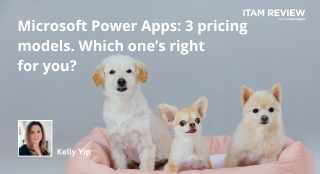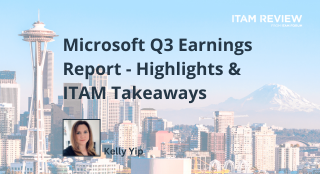Dell + Microsoft = VMware on Azure
Running VMware workloads on Microsoft Azure was first discussed towards the end of 2017, around the same time “VMware Cloud on AWS” was launched. There then followed a blog post from VMware taking a few shots at Microsoft and stating the initial project was “neither certified not supported by VMware”. Although this was subsequently toned down through edits, it gave a clear indication of the feelings between the two companies.
Well, fast forward 18 months or so and here we have Azure VMware solutions. The first available is via a VMware partner called CloudSimple, with a 2nd offering in the works from VirtuStream.

What does it do?
This new offering enables organisations to “move or extend on-premises VMware environments to Azure”, while continuing to benefit from your existing VMware investment including vSphere, vSAN, vCenter etc. vSphere based VMs can be created and viewed via the Azure portal and Azure Resource Manager and you can integrate Azure services such as Azure Backup and Azure Monitor too.
Organisations that are heavily invested in VMware, in terms of both technology and skills, will be able to take advantage of public cloud benefits – such as on-demand scale out – without writing off much of what has already been spent, and adding the cost of re-training teams on Azure.
Licensing & Pricing
It is interesting, and important, to note that the CloudSimple solution runs on infrastructure fully dedicated to you that is “physically isolated from infrastructure of other customers”. This should mean that no additional license rights (such as Software Assurance) are required to run application software in the VMware on Azure environment. However, I’d definitely say it’s something to keep an eye on with software vendors, just make sure you’re happy that your rights allow use in this new environment.
There is no public pricing for this currently, but I’d suspect this won’t, at least initially, be payable via Monetary Commitment on an EA. If that is the case, any use of this service will be additional to any Azure commitment already made via your contract. It’s also fair to say this isn’t going to be cheap! There are multiple parties who need to make money from it, and it requires dedicated hardware per customer, so you will really need to understand how it can benefit you to decide if it makes sense to go for this solution.
But wait – there’s more!
Microsoft CEO, Satya Nadella, was onstage at Dell TechWorld alongside Michael Dell, CEO of Dell, and they announced some other areas of co-operation when it comes to virtual desktops.
First, organisations with Microsoft 365 and VMware Workspace ONE will be able to manage Office 365 using integration with Microsoft Intune and Azure Active Directory.
Also announced was that Microsoft’s upcoming Windows Virtual Desktop (WVD) will be able to have its abilities extended via VMware Horizon Cloud on Microsoft Azure. Horizon Cloud is VMware’s platform for offering cloud-hosted virtual desktops that can be delivered to a range of devices; it will be interesting to see exactly what features it adds to Windows Virtual Desktop.
Conclusion
It’s very interesting to see these two long-term rivals start working together. This closer collaboration should be a positive for organisations – anything that makes it easier to deploy, manage, and use infrastructure is good. The power of the cloud is truly something to behold!
Quite what, if anything, this will mean for ITAM is yet to be seen, I think. If nothing else, it’s a good opportunity to ensure licensing rules are understood by the various teams this involves.
Further Reading
VMware on Azure – https://azure.microsoft.com/en-us/overview/azure-vmware/
VMWare on Azure by CloudSimple – https://azure.microsoft.com/en-us/services/azure-vmware-cloudsimple/
VMware on Azure by CloudSimple documentation – https://docs.microsoft.com/en-us/azure/vmware-cloudsimple/
CloudSimple – https://www.cloudsimple.com/
Can’t find what you’re looking for?
More from ITAM News & Analysis
-
Broadcom vs Siemens AG - A Brewing Storm
The ongoing legal battle between VMware (under Broadcom ownership) and Siemens is yet another example of why ITAM goes far beyond license compliance and SAM. What might, at first glance, appear to be a licensing dispute, ... -
Shifting Left Together: Embedding ITAM into FinOps Culture
During one of the keynotes at the FinOps X conference in San Diego, JR Storment, Executive Director of the FinOps Foundation, interviewed a senior executive from Salesforce. They discussed the idea of combining the roles of ... -
Addressing the SaaS Data Gap in FinOps FOCUS 2.1
I recently reported on the FinOps Foundation’s inclusion of SaaS and Datacenter in its expanded Cloud+ scope. At that time, I highlighted concerns about getting the myriad SaaS companies to supply FOCUS-compliant billing data. A couple ...
Podcast
ITAM training
Similar Posts
-
Broadcom vs Siemens AG - A Brewing Storm
The ongoing legal battle between VMware (under Broadcom ownership) and Siemens is yet another example of why ITAM goes far beyond license compliance and SAM. What might, at first glance, appear to be a licensing dispute, ... -
Microsoft Power Apps: Current Pricing Models Comparison
Back in November 2021, Microsoft made Power Apps available under the pay-as-you-go (PAYG) model, alongside the traditional Per User/Per App options. This PAYG model has gained popularity. It ensures simple rightsizing for Power Apps environments. Here, ... -
Microsoft Q3 Soars as AI and Azure Growth Fuels Market Gains
On the 30th April, Microsoft released its Q3 quarterly earnings report, exceeding expectations and igniting investor optimism. Investors had been keeping a watchful eye on Azure’s Cloud performance after Microsoft’s Q2 Cloud results fell short of ... -
The High Cost of Oracle Java: Managing Expenses and Operational Efficiency
For businesses reliant on Java, Oracle’s licensing model presents a formidable challenge. Once a freely available technology, Java has evolved into a costly necessity for enterprises, with licensing changes leading to widespread financial and operational concerns. ...




